Based on everything I’ve heard, many pilgrims skip the leg between Lucca and Altopascio. It’s not a particularly long or difficult stretch, but it’s almost entirely on asphalt and runs through a combination of an urban, suburban, and industrial landscape, one that is perhaps the least scenic leg of the entire Via Francigena. Originally, when I learned that my Brazilian friends H & V would be in Lucca at the same time as me, and that they were thinking about taking the train to Pisa the next day and then leapfrogging ahead a few kilometers, I thought about skipping it myself and spending the day exploring.
But on the way to meet them for a drink in the Piazza dell’Anfiteatro I made the decision to walk the leg anyway.
I’m not trying to take some noble, self-righteous stance that a pilgrim should never take a train or a bus or hitch a ride; I took a train a couple of weeks ago to catch up with my camino family after my bank card got eaten at the ATM, and a few days before that I took a bus about 5 km to avoid a particularly dangerous stretch of road when leaving Piacenza. We pilgrims all make decisions about the route we will take and how we will take it; we make these decisions multiple times every single day on The Way.
What ultimately helped me make up my mind was this: the day of my journey to Altopascio I had plans to take a train to Florence to meet my friend Lori for the weekend, a little holiday from walking, and I decided that visit should be the reward for doing something challenging; in my mind there’s nothing challenging about taking a cushioned shortcut to bypass something potentially unpleasant, and so that morning I woke up as early as possible to hit the road, boots on, laces tied, walking stick in hand.
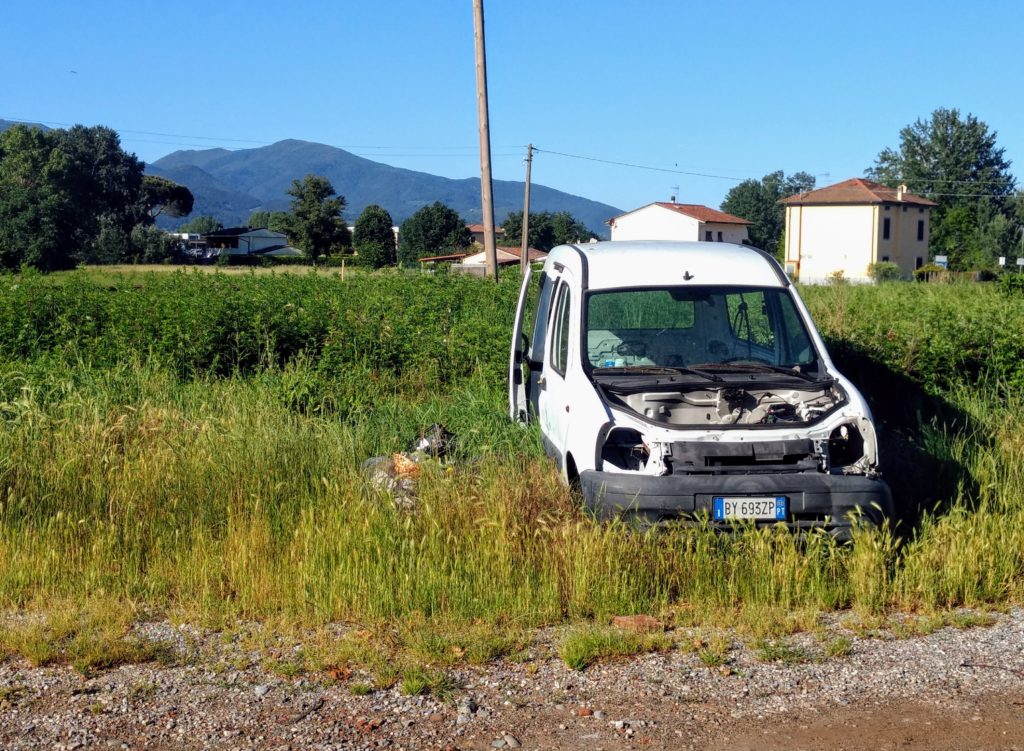
The previous day’s rain had, unfortunately, cleared to bright blue skies. At 6:45 a.m. I could already feel the heat looming. The thought of walking 20 km on hot asphalt did not make the day any more appealing. When the kind man who runs the guest house where I was staying in Lucca pointed at the sky with a wide smile, I said in my bad Italian: È bello pero molto caldo. It’s beautiful but very hot.
I won’t try and make this a post about the importance finding beauty in ugliness. I do believe it’s true that beauty can be found in the seemingly ugly, though I wouldn’t call the road to Altopascio ugly. It certainly isn’t as stunning as crossing the Apennines or as surreal as walking through the rice fields to Vercelli. It isn’t as tranquil as traversing the rolling hills and woodsy trails of Tuscany. Much like the descriptions I’ve read, it’s an endless suburban-urban route, full of cars and workers, mini-malls and clean-lined industrial buildings.
I’m also not going to romanticize the day with a touching story about how I rescued a nun’s three-legged dog and, in the process, was rewarded with armloads of roses. Okay, I did see a three-legged dog and a nun, but not together, and nobody gave me any flowers.
Indeed, the road to Altopascio is, as the guidebook says, “a plain route” full of asphalt, traffic, and rundown buildings.
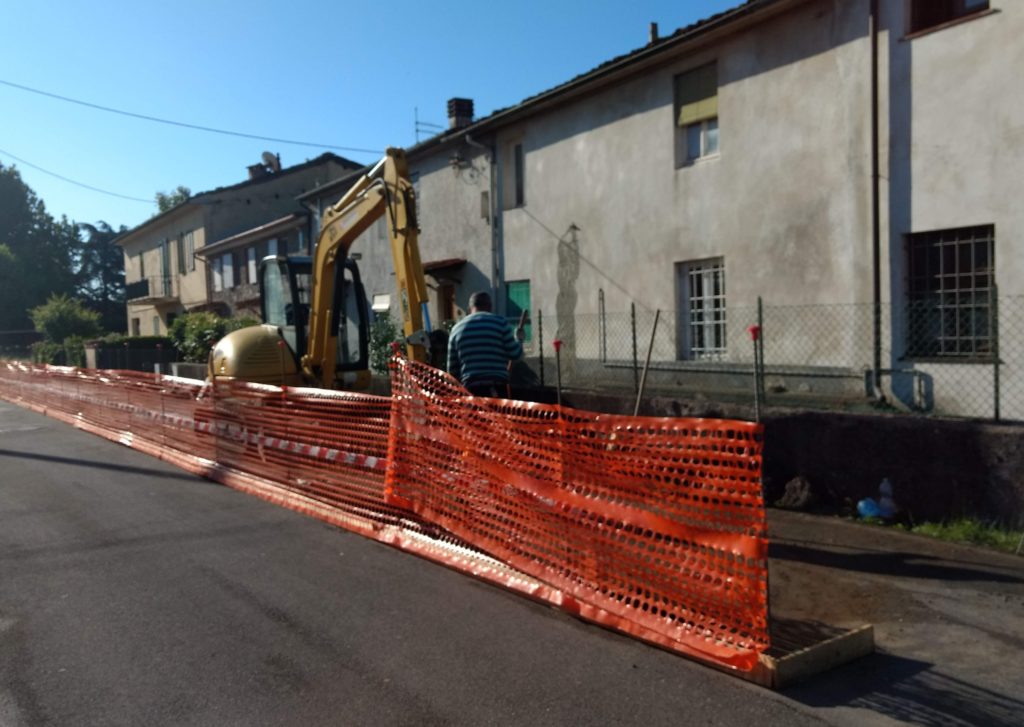
When we travel, we tend to bypass the unattractive and make a beeline for the picturesque. We want to experience the postcard of a place, which in my mind only gives us a fragment of that place, a fragment that often isn’t all-that interesting the longer you look at it. When you walk, though, you experience everything. It’s unavoidable. You get to experience the different pieces of a place that you rarely see from a tour bus or a train window. Understanding a place isn’t about experiencing any one piece but instead the collective whole that the pieces make. The good, the bad, and, yes, even the ugly.
I understand the impulse to skip the less photographic landscapes, but for me, as I take this journey, there’s something important about uncovering as many pieces of this place as possible, at not turning away from those things that might seem less aesthetically pleasing.
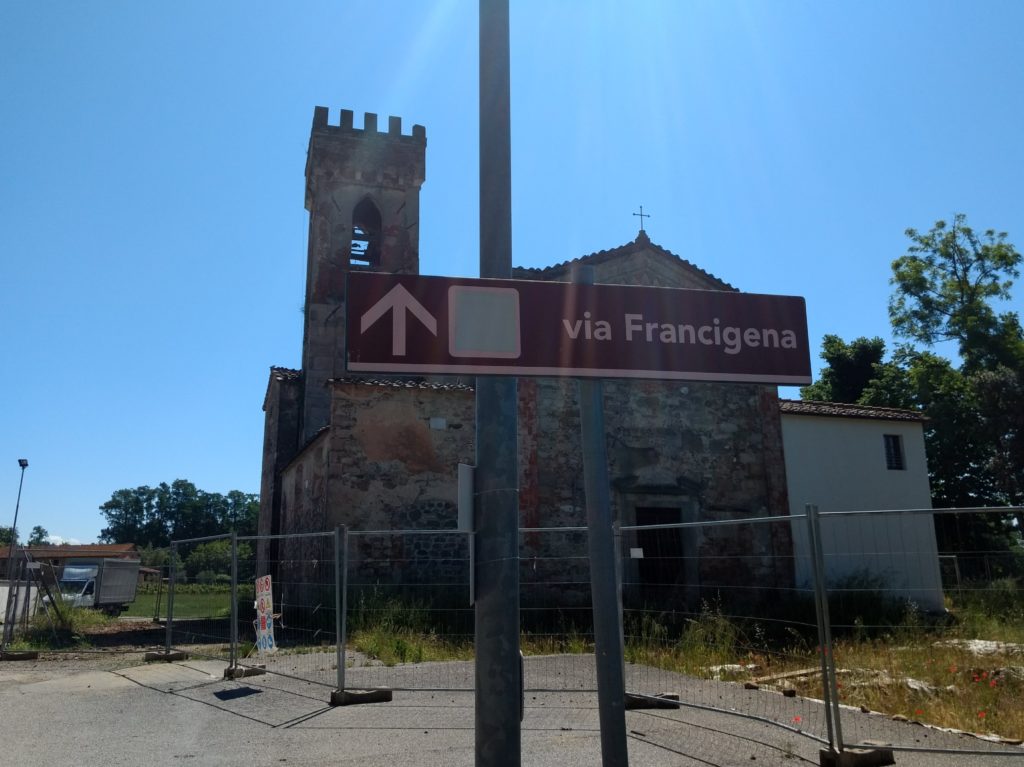
The funny thing is that the road to Altopascio turned out to be one of my most memorable days of walking yet. Maybe it was because the leg was so short or because I knew that after the day’s walking I’d be on my way to Florence, the city that made me fall in love with travel, to see one of my favorite people in the world. Maybe it was all of those shots of espresso I kept pounding (one advantage to walking through an urban environment is a multitude of cafés to choose from).
Whatever it was, on the road to Altopascio, I had an extra spring to my step. I found myself laughing aloud. I sang show tunes and camp songs as I walked. I greeted every person I passed on the road with a friendly Buongiorno. When I ran into two equally sweaty Italian pilgrims — my first pilgrim sighting on the road in days — after a particularly harrowing intersection, we beamed at each other and proclaimed, Oggi è bellissimo.
Today is beautiful.
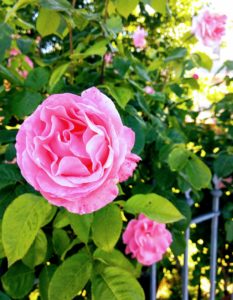
The fact is, our world isn’t made up of a series of postcard perfect places. Most of the world isn’t that photogenic. My photos of the road to Altopascio may not be the ones I frame and hang on my walls when I return home, but they still are an equal part of my journey, a part I’m learning to cherish just as much as the postcard memories. After all, a pilgrimage isn’t about experiencing only the beauty of the world but instead experiencing the complex world in its entirety. We might not like every piece of it — I get angry when I see garbage by the side of the road; I get upset when I see a bird that’s been run over by a car — but we can’t deny its existence to paint a prettier picture.
More than uncovering the beauty of these places, places like the road to Altopascio, I want to find the truth of life itself. Real life of real people that exists in the asphalt and concrete and garbage and workers and abandoned buildings. Because in the end, this is our world, a world I want to learn to move through without averting my eyes.
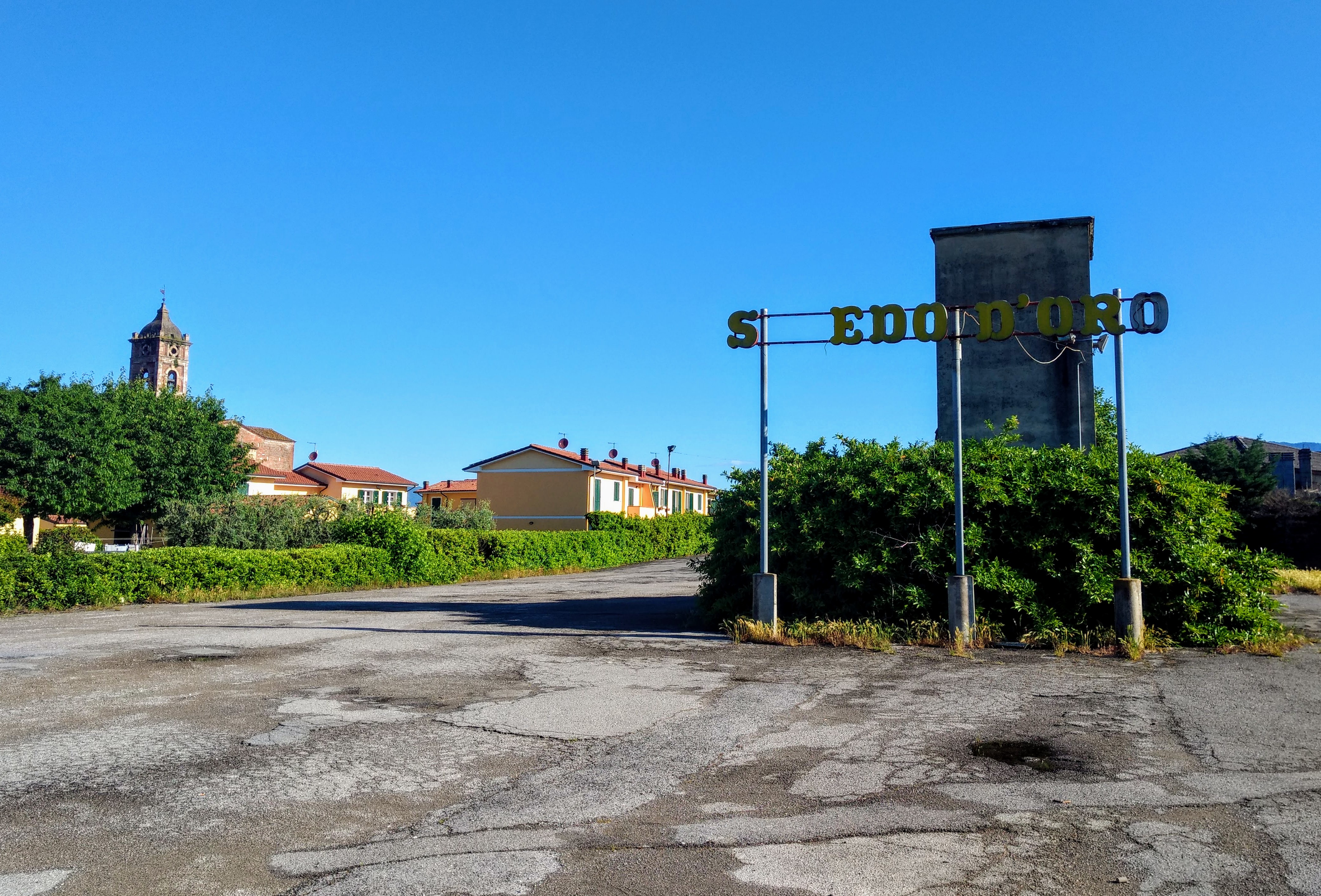



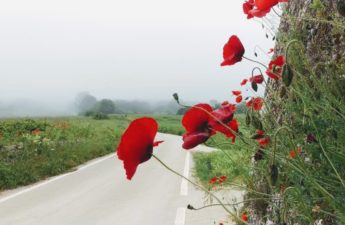
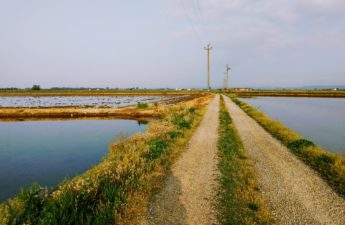
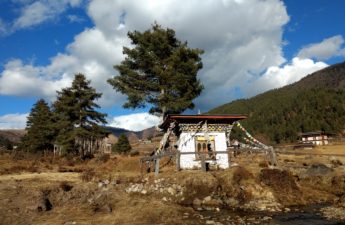
I love this — what a way to celebrate the world, warts and all. A million years ago, when I was traveling in China, I went to take a picture of a glorious landscape — and stopped short as I noticed the smokestack that marred it. I tried to refocus my mind and think about how miraculous that smokestack must have seemed to the locals when it was built: It meant progress! Development! My caption for the picture (and mantra since then) was “Trying to remember the beauty of industry.”
Of course, that might be harder for this stretch of the Via, which sounds more like one of those miserable strip-mall stretches in most American cities. Still, you found reality! Or another facet of it, at any rate.
Yeah, I felt like I was walking around San Leandro, CA! But it was a place where real people live, and I’m so happy I saw it. Life is not a series of picture postcards, and I think pilgrimages should remind us of that! xo
I would have gotten distracted and gone shopping. Was this your last leg then before your unfortunate laundry accident? I would have been yelling at God with closed fists!
Not much fun shopping, though several bars to distract you!
No, I walked about a week further. Met up with another amazing group of people. I still have a couple of stories I’ll be writing about; I just wanted to put some distance between my laundry accident and further writings about The Way 🙂